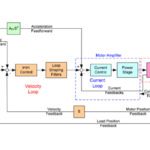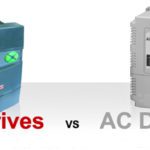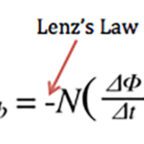 By Jeff Conner • Dallas Service Manager for Control Concepts
By Jeff Conner • Dallas Service Manager for Control Concepts
AC motor drives (or controllers as we call them in this context) come with a range of options — including different control interfaces, enclosures, and motor-control methods. They provide flexible choices for machine designs and can leave the door open for future improvements and upgrades. Modern AC drives can even perform — independently — the functions once handled by simple PLCs. Select the right motor controller for your needs by considering factors that could impact its performance.
Before you can select the right AC motor controller, you need to know what it is and why you need one (or more) for your machinery.
Again, a motor controller as we use the term here is a drive — consisting of one or more devices integrated into machinery to control the performance of an electric motor. Different types of motor controllers perform some or all of the following functions:
- Start and stop the motor; select forward or reverse motor rotation
- Protect motor against overloads and faults; monitor external safety devices and stop motor quickly if needed
- Select and regulate motor speed; regulate or limit motor torque
- Work in conjunction with other motor controls to share a load
- Operate under manual control, external control from a PLC, or automatically based on internal drive programming, time of day, and sensor inputs to the VFD
- Communicate motor and drive status to an operator or to an automation system
AC motor controllers can be direct on line (DOL) or reduced voltage starters or variable speed drives. Controllers for servo motors and permanent magnet motors are also part of the family. Controllers for DC motors and stepper motors are also available, but not discussed here.
Factors in selecting the proper ac motor controller
Choose the appropriate motor controller that will optimize the performance of your process while balancing the cost and providing the right level of capability.
First, a motor controller must be compatible with the rest of the system. If you are starting from scratch with all-new parts, finding a compatible motor controller may be easy. But if you’re replacing a failed controller, you need to make sure the replacement is compatible with a system having older controls, motors, or other aged components with which the controller must work and communicate.
The environmental conditions under which your product must function dictate controller selection. Think about the application’s operating temperature; dust and other airborne contaminants in its environment; vibration and moisture to which the design is exposed; and codes specific to the facility in which the product operates.
Then find the controller that tolerates the installation conditions as satisfies regulatory requirements.
Seven questions to ask about the ac motor drive (controller) setup
1. Does the motor only need to run at a fixed speed? If so, an across the line starter may be all you need.
2. Can the machine and the incoming power line tolerate the stress of a full-voltage across-the-line start?
a. If the answer is yes, a contactor-type starter is a good choice.
b. If no, a reduced voltage “soft starter” is be a good choice for large motors. For smaller motors, a variable speed drive may be just as cost effective and simpler to apply and install.
3. Does the application need motor speed to change? Then a variable speed drive is required. Features of such drives vary with application requirements.
4. In what speed range will the motor operate? How accurately must the motor speed be regulated? Is positioning control required?
a. Basic control is possible with a simple V/Hz type AC drive.
b. Many basic AC drives also include an improved control algorithm which uses motor modeling to improve speed regulation. Different manufacturers might refer to these control modes as “open loop flux vector control” or “space vector control” “predictive torque control.” If the drive is programmed correctly, these work well for many applications.
c. If very accurate speed control is needed (or if operation at very low speeds is required) closed-loop control is necessary. This is also true if positioning functions are needed. An encoder or other feedback device is added to the motor to close the loop. The encoder provides real time speed, direction and position information to the drive and allows it to constantly adapt to actual running conditions. You must select a drive intended to operate in this mode, and an option card may be required to connect the encoder.
5. Once the type of drive is determined, ask: What’s the number and type of I/O points needed for control? This could be “none” if the drive will be controlled by its own keypad … or complicated if several safety interlocks and multiple control stations are required.
6. Would control (or just monitoring) via digital communications be useful? This can remove some or all of the hard-wired I/O from the drive, allowing it to instead be controlled and monitored through a communications network. You’ll need to verify that the drive you select supports the protocol and port type needed.
7. Does your motor control require any special programming functions? All drives will respond to simple speed and direction commands, but not all will include PLC-like logic or a real-time clock.
As you narrow down your choices, consider the cost of the controller as a percentage of the price level of your product. You want to sell it and make a profit. Selecting an expensive controller for what should be a moderately priced system is counterproductive.
With more than 25 years of experience in the industrial automation repair industry, Jeff Conner is the Dallas Service Manager for Control Concepts and serves on the Advisory Committee for the Electronics Technologies Department at Texas State Technical College. Control Concepts offers around the clock service and support anywhere you need it. To learn more, visit controlconceptstexas.com.







Leave a Reply
You must be logged in to post a comment.